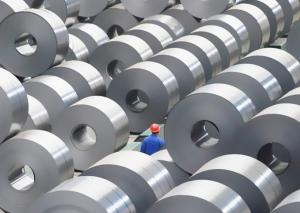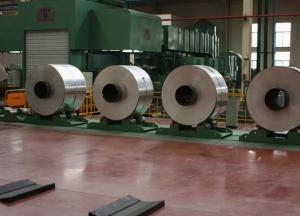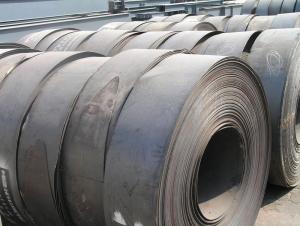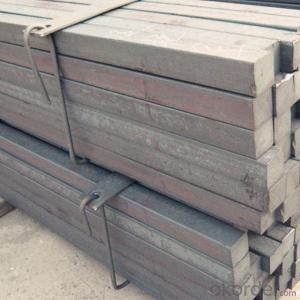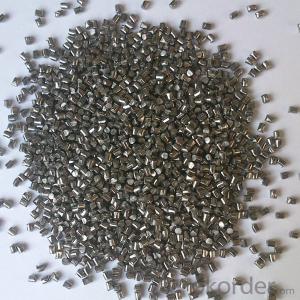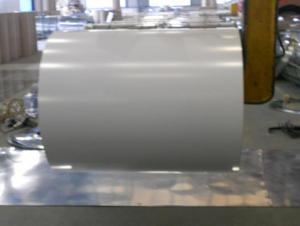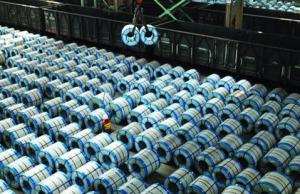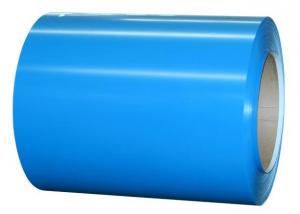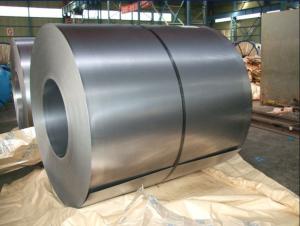Black Anneal Cold Rolled Steel-Bright Finish
- Loading Port:
- China Main Port
- Payment Terms:
- TT or L/C
- Min Order Qty:
- 25M/T m.t.
- Supply Capability:
- 50000 Metric Tons Per Month m.t./month
OKorder Service Pledge
OKorder Financial Service
You Might Also Like
Specifications Of Black Anneal Cold Rolled Steel-Bright Finish
|
COLD ROLLED STEEL | |
|
Thickness |
0.08mm-4.00mm |
|
Width |
30mm-2000mm |
|
Sheets Length |
+0mm-6000mm |
|
Coil inner Diameter |
508mm or 610mm |
|
Surface Treatment |
●Matt Finish/Bright Finish ●Oiling/Dry |
|
Annealing Methods |
●Bright Anneal/Black Anneal |
|
Coil Weight |
1mt-25mt |
Standard and Grade Of Black Anneal Cold Rolled Steel-Bright Finish
|
|
JIS G3141-2005 |
BSEN10130-2006 |
ASTM A1008-12a |
|
Commercial Quality |
SPCC |
DC01 |
CS Types A/B/C |
|
Drawing Quality |
SPCD |
DC03 |
DS Types A/B |
|
Deep Drawing Quality |
SPCE SPCF(non aging) |
DC04 |
DDS |
|
Extra Deep Drawing Quality |
SPCG(non aging) |
DC05/06 |
EDDS |
Definition Of Black Anneal Cold Rolled Steel-Bright Finish
Cold rolling means that hot rolled steel coil is rolled below recrystallization temperature after pickling, and its finished product is full hard coil. After annealing process for full hard coil, the finished product is cold rolled production. The thin gauge cold rolled steel sheet and strip steel have advantages of low surface roughness, high dimension accuracy and good mechanical properties etc, and which have been widely used in auto manufacturing, home appliance, architecture, aviation, precision instrument, hardware and enameling industry etc.
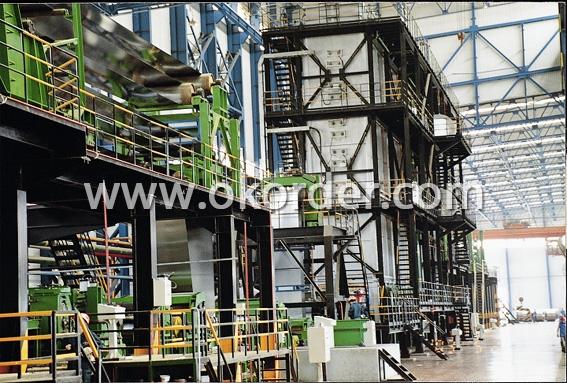
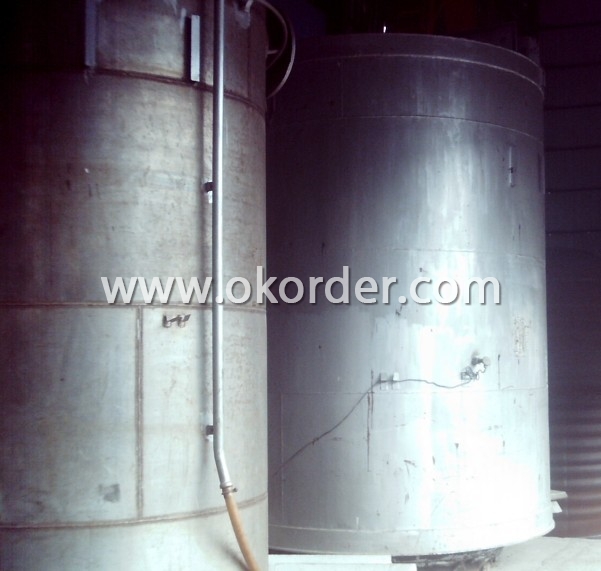
Application Of Black Anneal Cold Rolled Steel-Bright Finish
It is the based material for galvanized steel coil and pre-painted galvanized steel coil. It is widely used in light industry for making tank, furniture, pipe, refrigerators, washers, freezer plate, air conditioner, micro-wave oven, water heater, soot-such machine, electric rice cooker, electric roaster oven, dryers and automobile etc. In the other application industries, it’s mainly used for enameling, office furniture, burglarproof door, electronic element, fastener battery, hardware, automotive fitting etc.
Packaging & Delivery Of Black Anneal Cold Rolled Steel-Bright Finish
The packing of coils consists of anti-damp paper, PVC film, hardboard paper, steel box, strapped with steel strips, fitted with locks and edge protectors and guarantees the optimal condition of the delivered goods. Each coil can be additionally fitted with wooden/steel skids(eye to the side) or wooden pallets(eye to the sky). Eye to sky package: Anti-damp paper inside full wrapped with plastic film, iron sheet outside on wooden pallet in 20 feet container with 25mt.
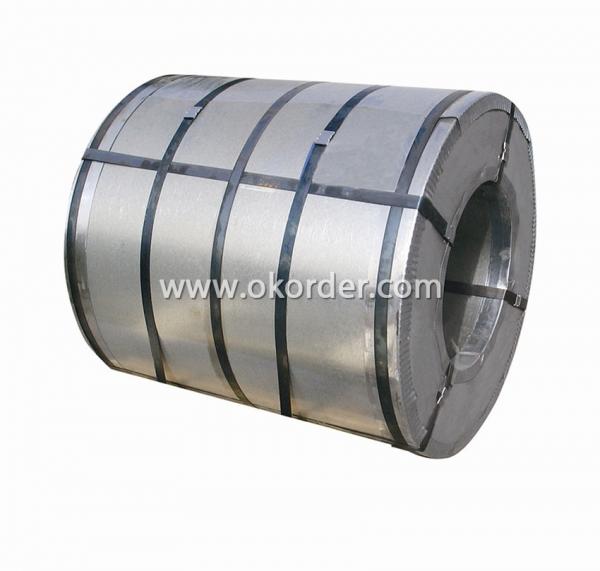
- Q:What are the different types of steel wires and their applications in telecommunications?
- There are several types of steel wires commonly used in telecommunications. These include galvanized steel wires, stainless steel wires, and high-tensile steel wires. Galvanized steel wires are coated with a layer of zinc, which provides corrosion resistance and durability. They are commonly used for overhead transmission lines, telephone cables, and fiber optic cables. Stainless steel wires are highly resistant to corrosion and have excellent strength properties. They are often used in marine environments, underground installations, and for aerial cables where high tensile strength is required. High-tensile steel wires are known for their exceptional strength and toughness. They are used in applications where heavy loads and long spans are involved, such as suspension cables for bridges and power transmission lines. Overall, these different types of steel wires play a crucial role in the telecommunications industry by providing strength, durability, and reliability for transmitting signals and supporting communication infrastructure.
- Q:How is steel forgings machined for precision components?
- Steel forgings are machined for precision components using various techniques such as milling, turning, drilling, and grinding. These processes involve carefully removing excess material to achieve the desired shape and dimensions with high accuracy and surface finish. The machinists utilize advanced tools, computer-controlled machines, and precise measurements to ensure that the steel forgings meet the required specifications for the precision components.
- Q:What are the different types of steel beams?
- There are several different types of steel beams, including I-beams, H-beams, W-beams, and C-beams. Each type has a unique shape and serves different purposes in construction and engineering projects.
- Q:What are the different methods of shaping steel into desired forms?
- There are several methods of shaping steel into desired forms, including forging, casting, rolling, and extrusion.
- Q:How does steel pipe threading for fire sprinkler systems work?
- Steel pipe threading for fire sprinkler systems involves the process of cutting grooves into steel pipes to create a threaded connection. This threading is done using a specialized machine called a pipe threader. The threaded connection allows the individual pipes to be easily joined together, ensuring a secure and leak-proof connection.
- Q:What are the different types of steel sections used in bridges?
- There are several different types of steel sections used in bridges, including I-beams, H-beams, box girders, trusses, and arches. Each of these sections offers unique structural properties and can be used in various bridge designs depending on the specific requirements and loads that need to be supported.
- Q:How does steel compare to other materials like aluminum or wood?
- Steel is generally stronger and more durable than both aluminum and wood. It has a higher tensile strength, making it better suited for structural applications. Steel is also more resistant to fire, pests, and rotting compared to wood. On the other hand, aluminum is lighter and more corrosion-resistant than steel, making it preferable for certain applications like aerospace or marine industries. Ultimately, the choice between steel, aluminum, or wood depends on the specific requirements and characteristics needed for a particular project.
- Q:How is steel used in the manufacturing of packaging materials?
- Steel is commonly used in the manufacturing of packaging materials due to its strength, durability, and versatility. It is often used to create cans, containers, and drums for packaging various goods like food, beverages, and chemicals. Steel packaging provides excellent protection against moisture, light, and contaminants, ensuring the safety and preservation of the packaged products. Additionally, steel is recyclable, making it an eco-friendly choice for packaging materials.
- Q:How is steel used in the energy sector?
- Steel is extensively used in the energy sector for various applications such as the construction of power plants, transmission towers, and pipelines. It is also used in the production of wind turbines, solar panels, and nuclear reactors. The durability, strength, and heat resistance of steel make it an ideal material for supporting and safeguarding critical energy infrastructure.
- Q:How are steel products used in the telecommunications industry?
- Steel products are used in the telecommunications industry for various purposes such as building transmission towers, constructing infrastructure for cellular networks, manufacturing support structures for antennas, and providing protection for underground cables and conduits.
1. Manufacturer Overview |
|
|---|---|
| Location | Hebei, China |
| Year Established | 1999 |
| Annual Output Value | |
| Main Markets | Africa Eastern Europe Southeast Asia Eastern Europe;North America |
| Company Certifications | ISO9001 GBT28001 ISO14001 |
2. Manufacturer Certificates |
|
|---|---|
| a) Certification Name | |
| Range | |
| Reference | |
| Validity Period | |
3. Manufacturer Capability |
|
|---|---|
| a)Trade Capacity | |
| Nearest Port | Tianjin; Qingdao |
| Export Percentage | 41% |
| No.of Employees in Trade Department | 20 People |
| Language Spoken: | English; Chinese |
| b)Factory Information | |
| Factory Size: | 198000square meters |
| No. of Production Lines | 5 |
| Contract Manufacturing | OEM Service Offered |
| Product Price Range | Average |
Send your message to us
Black Anneal Cold Rolled Steel-Bright Finish
- Loading Port:
- China Main Port
- Payment Terms:
- TT or L/C
- Min Order Qty:
- 25M/T m.t.
- Supply Capability:
- 50000 Metric Tons Per Month m.t./month
OKorder Service Pledge
OKorder Financial Service
Similar products
New products
Hot products
Related keywords
